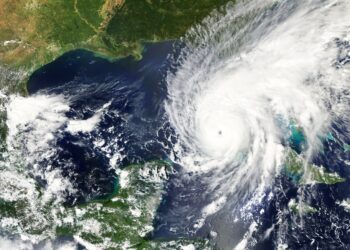Geostrategic considerations during COP27.
This year marks 30 years since the United Nations Framework Convention on Climate Change (UNFCC) was adopted and seven years since the Paris Agreement was reached at Conference of the Parties (COP) 21. Paris was a breakthrough. For the first time ever, all countries and territories agreed that it is imperative to limit global warming to below 2 degrees Celsius and aim for 1.5 degrees to avoid a global catastrophe. They agreed, in principle, to work together to adapt to the impacts of climate change and to provide the financial means to achieve those goals. In Paris, countries also committed to provide plans aimed at reducing their emissions through Nationally Determined Contributions (NDCs), to be reviewed every five years to reflect their evolving (and assumedly growing) levels of ambition.
Last year’s COP26 in Glasgow constituted the first review opportunity. Even though the international geopolitical landscape was far from ideal – with countries facing varying degrees of COVID-19 disruption and international cooperation on the backfoot – the general mood was one of hope and urgency. As such, most countries recognized the need to accelerate action in this decade to reduce carbon emissions by 45 percent to reach net zero by 2050 and to revise emission reduction pledges in 2022 rather than 2025, as originally scheduled. Statements on the need to phase out inefficient fossil fuels were also included in the Glasgow Pact and, once again, developed countries reiterated their yet unachieved objective of providing USD $100 billion a year in climate finance for developing countries.1
Many of the pledges made in Glasgow lacked implementation details. This year’s COP 27 was supposed to bring progress, clearer details on implementation and more ambitious NDCs. However, as officials continue their deliberations at COP27 from 6 through 18 November in Sharm El Sheikh (Egypt) the general atmosphere is somber to say the least. Geopolitics is to blame.
Rising geopolitical tensions are changing the global order that came out of the cold war. These transformations are characterized by weaknesses in global governance, rise of conflict, mounting backlashes to multilateralism and free trade. We are witnessing the rise of a multi-polar world with little incentive for international cooperation at a time when coordinated solutions to global problems, not least the climate emergency, are most in need. Alliances, trade relations and supply chains are shifting from the globalized order – based on economic efficiencies, integration, and international rules – to a more complex system based on regionalization, domestic interests, and geopolitical rifts. The age of globalized abundance appears to have been replaced by a period of disruption and scarcity.
The partial unravelling and reshaping of globalization were already in motion before both the pandemic hit in 2020 and Russia’s invasion of Ukraine. These two monumental crises, combined with growing rivalry between the US and China, massively accelerated the trend. If mutually agreeable solutions to tackle climate change were hard to find in a globalized world where some form of international consensus existed, they will become even more quixotic at a time of mistrust and polarizing political division between nations. Three major geopolitical issues risk derailing meaningful progress at COP27:
The (radioactive) elephant in the room: Russia-Ukraine and the global energy crisis
Warnings from the US President that the threat of nuclear Armageddon is at its highest since the 1962 Cuban missiles crisis, and ongoing global instability, indicate the Russian invasion of Ukraine will impact negotiations in Egypt. Russia’s invasion of Ukraine, and subsequent international response, has further weakened key multilateral institutions such as the G20 and the UN. Fractures between Russia and “the West” are inhibiting fruitful dialogue.
The ripple effects of Russia’s war, coupled with the most severe sanctions ever imposed on a large economy, are wreaking havoc in global food, commodities, and energy markets that were already struggling to recover from the disruptions of the pandemic. Sanctions and war dynamics are removing and dislocating the world’s largest exporter of oil products and gas from the international trading system. This is forcing dramatic price rises and energy supply insecurities, trends that have pushed climate change down the list of domestic priorities in many countries and revamped short-term demand for fossil fuel projects to sustain supply and reduce dependence on Russian imports. In sum, the breaking up of the integrated energy market is forcing countries to “go alone” and pursue energy policies based on national security priorities and domestic interests, rather than mutually agreed decarbonization goals.
In the immediate term, countries are focusing on fossil fuel reliance for security purposes. Already in 2021, the IEA noted a post-pandemic rebound in coal and oil. Now, due to the war, even green-leading Europe has been forced to restart coal power plants and massively increase imports of expensive liquified natural gas (LNG) from friendly trading partners, while committing to even more ambitious decarbonization policies in the medium to long term. On the other hand, energy importing countries who remain neutral vis-à-vis Russia’s actions, are making the most of discounted, dislocated Urals crude, mitigating revenue losses on the part of Russia. Finally, companies are reporting record fossil fuel profits amidst price volatility and energy insecurity. These dynamics are exposing the still essential role played by fossil fuels, and particularly lower emission gas, in powering our developed and developing economies. Before the war, when global energy markets were not as disrupted, fossil fuels still constituted 80% of total energy supply in 2019. Renewables accounted for 3% of total energy supply2 (graphic below). Once the immediate energy crisis caused by the war subsides, the world will necessitate a much steeper decarbonization curve in the medium to long term to attain net zero by 2050. Absent technological breakthroughs, demand reduction, energy efficiency programs or a radical change to our growth-based economic model, this is likely to cause significant shocks. If COP27 was supposed to deliver renewed, more ambitious decarbonization plans, the impact of the war in Ukraine will likely translate in modest immediate action and a continuation of future promises and aspirational commitments during the negotiations.
Tensions between the US and China
The second big geopolitical issue complicating negotiations is the growing political saber rattling between the US and China. One of the most promising achievements of COP26, the US-China climate accord, has now been scrapped following speaker of the US House of Representatives, Nancy Pelosi’s, visit to Taiwan. Even though the agreement was not substantively game-changing, it showed a commitment to cooperation and dialogue which reignited some faith in mutual efforts to combat the common challenge of climate change.
Instead, we can expect the US and China to focus on their own unilateral efforts as COP27 progresses, boasting domestic policy achievements and objectives in reducing emissions rather than investing in dialogue and policy coordination efforts.
Competition rather than cooperation in clean energy is likely to increase. The US approved its most ambitious climate plan to date: the Inflation Reduction Act (IRA), two weeks after climate talks with China fell apart. Consistent with Washington’s decoupling policies, the IRA aims at boosting American clean energy manufacturing to reduce dependence on Chinese imports.
For its part, China is also focusing on ensuring the security of energy, food and other key supplies powering the Chinese economy, in an era of growing uncertainty and competition with the West. This was, in fact, one of the main themes coming out of the 20th Communist Party Congress at the end of October. China’s national commitment to reach peak carbon emissions before 2030 and achieve carbon neutrality by 2060 will play out in this context. A recent World Bank report highlights that private sector participation is crucial to China’s path to carbon neutrality. It suggests that a more predictable regulatory environment with better access to markets and finance would allow the private sector to play a central role in delivering market solutions, improving productivity, reducing costs, stimulating technological innovation, and filling the $14 trillion financial gap needed to achieve carbon neutrality by 2060. Considering that China emits 27 percent of global carbon emissions and a third of the world’s greenhouse gases, if it fails to transition to a low-carbon economy, overall global climate goals will remain unfulfilled. In an era of receding globalization and growing distrust between the world’s two largest emitters, the risk is real.
If we thought the geopolitics of oil were complex (ensuring freedom of navigation plus a degree of stability in the Middle East), sourcing for critical minerals and other inputs to empower the ‘electrification’ of energy will prove even harder. Pursuing a clean energy revolution in the age of West vs China competition, will mean dealing with more complex and critical supply and transport systems. Countries will scramble for huge quantities of rare earths, copper, cobalt, chromium, lithium, nickel, graphite, silicon, zinc, and more. And the necessary quantities for a green transition will only be available if we combine supplies from a wide array of disparate suppliers, including those less strategically or politically aligned. Without serious efforts in energy efficiency, circular economy, and overall energy demand optimization, describing the task as herculean would be putting it mildly.
Courtesy KPMG Get full report here












